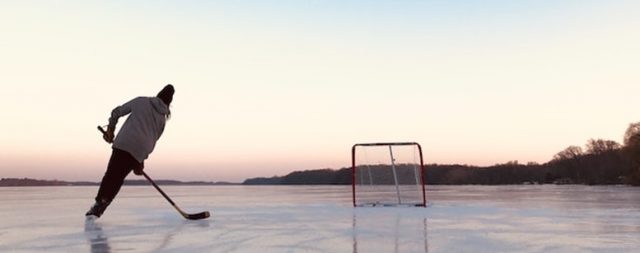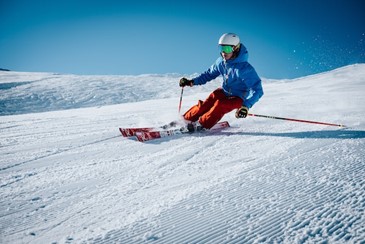Conor Colangelo works as a seasoned finance professional with a distinctive inclination towards the dynamic worlds of hockey and skiing and snowboarding. With a strong background in finance and a genuine passion for these exhilarating sports, Conner brings a unique perspective that seamlessly merges financial expertise with a love for athletic pursuits.
Athletes across the Northern hemisphere can enjoy a wide variety of cold weather sports – from hockey to skiing to snowboarding and more. While hockey is a high-intensity, often indoor, physically combative competitive team sport, skiing and snowboarding can feel like a polar opposite since they are individualized, outdoor, graceful racing activities. But in fact, athletes who transition from the ice to the powder and back again can only benefit from the transferable skills developed in each sport.
Conor Colangelo explores below how hockey players can embrace benefits from skiing and snowboarding and vice versa.
Conor Colangelo on the Hockey Stop – Applicable to Both Skates and Skis
One of the most important skills for a hockey player to develop is the hockey stop, which is when the skater makes a hard stop by sharply turning both skates at a 90 degree angle and digging through the inside edge and heel of the skate. This is also how skiers and snowboarders stop too! Riders turn their skis or board at the very same angle and adopt a similar bent kneed stance.
It can be daunting to do this, as it’s a foreign feeling to be traveling at a high speed with one’s feet essentially attached to two long straight edges. Practicing this move in a variety of settings, with various equipment, can help an athlete build muscle memory so that stopping movement in this way becomes second nature.
Developing Crossovers in Both Sports
Conor Colangelo explains that skiing and skating are similar in that one’s feet are attached to blades – but there is a big difference in the blade length! Experienced hockey players looking to start skiing might find it challenging to do a crossover simply because the blades are so long.
The general way of moving and turning the skis is different and far more subtle than skating, requiring only a shifting of the body weight onto different edges of the blade. Whereas skating requires pushing out the thighs and sometimes even lifting one skate over the other.
Conor Colangelo notes that with that said, developing a new way of moving will also help develop overall muscle strength.
Cultivating a Need for Speed
Skiing and snowboarding are so popular because they combine beautiful landscapes, technique, and extreme speed. The average skier is likely to travel anywhere from 10 to 20 miles per hour and the average hockey player similarly hits speeds of 10 to 25 miles per hour – in fact, the more advanced players can go up to even 35 miles per hour!
Conor Colangelo says that practicing each of the sports can help one develop a tolerance – and even a taste – for fast movement in cool temperatures.
 Building Up Strength and Resilience
Building Up Strength and Resilience
Conor Colangelo explains that snowboarders build up overall strength and resilience by tackling rough terrains and performing jumps and tricks. Snowboarding is also particularly beneficial to core strength, which is what is required to expertly control the single board with both feet strapped to it while still remaining upright and facing the desired direction. There is also occasional impact with the terrain in snowboarding, and the sudden bumps can prepare hockey players for the impact of bumps and even tackles than can take place during a game.
The body position and type of balance one develops while skiing is directly related to that needed for skiing, and therefore, for competitive ice hockey! Skiing also often takes place over long distances for significant periods of time. Endurance is also paramount in hockey, as one must remain in constant speedy motion for the entirety of the hour plus long game. Practicing skiing for long periods in cold temperatures can build up the resilience required to excel as a hockey player.
Conor Colangelo says that in contrast, skating can also help develop the leg strength and balance required to control skis and snowboards.
And all three sports help athletes develop fitness, coordination, and agility which is useful across all winter sports – and beyond!
In Conclusion
Ice hockey, skiing, and snowboarding all require certain levels of fitness, coordination, agility, balance, and perseverance, with an emphasis on speed and leg strength. By practicing all three sports, one can become more proficient in the others. Hockey players looking to up their game might consider leaving the ice for a few days and hitting the slopes!



 Building Up Strength and Resilience
Building Up Strength and Resilience


